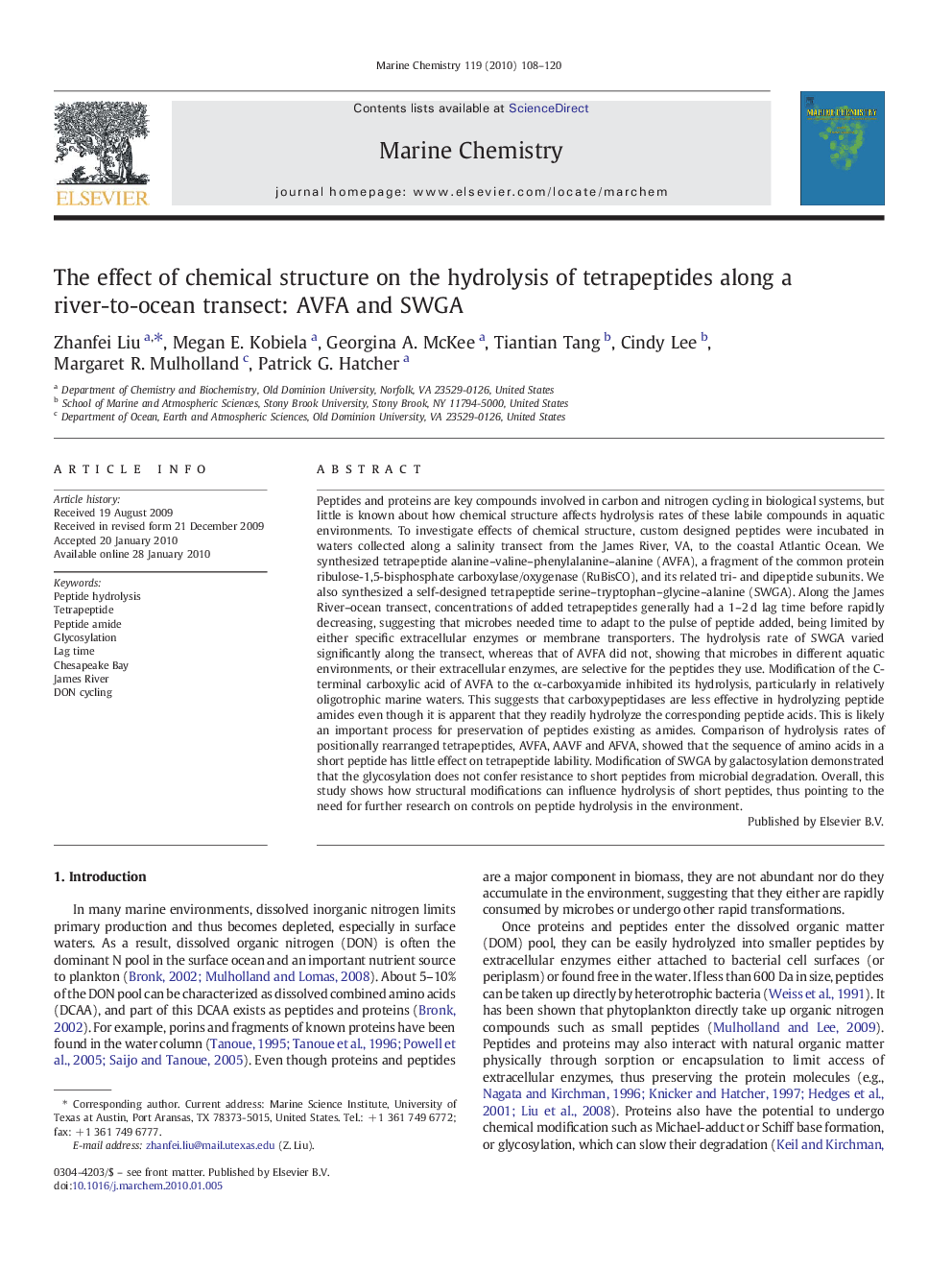| Article ID | Journal | Published Year | Pages | File Type |
|---|---|---|---|---|
| 1261757 | Marine Chemistry | 2010 | 13 Pages |
Peptides and proteins are key compounds involved in carbon and nitrogen cycling in biological systems, but little is known about how chemical structure affects hydrolysis rates of these labile compounds in aquatic environments. To investigate effects of chemical structure, custom designed peptides were incubated in waters collected along a salinity transect from the James River, VA, to the coastal Atlantic Ocean. We synthesized tetrapeptide alanine–valine–phenylalanine–alanine (AVFA), a fragment of the common protein ribulose-1,5-bisphosphate carboxylase/oxygenase (RuBisCO), and its related tri- and dipeptide subunits. We also synthesized a self-designed tetrapeptide serine–tryptophan–glycine–alanine (SWGA). Along the James River–ocean transect, concentrations of added tetrapeptides generally had a 1–2 d lag time before rapidly decreasing, suggesting that microbes needed time to adapt to the pulse of peptide added, being limited by either specific extracellular enzymes or membrane transporters. The hydrolysis rate of SWGA varied significantly along the transect, whereas that of AVFA did not, showing that microbes in different aquatic environments, or their extracellular enzymes, are selective for the peptides they use. Modification of the C-terminal carboxylic acid of AVFA to the α-carboxyamide inhibited its hydrolysis, particularly in relatively oligotrophic marine waters. This suggests that carboxypeptidases are less effective in hydrolyzing peptide amides even though it is apparent that they readily hydrolyze the corresponding peptide acids. This is likely an important process for preservation of peptides existing as amides. Comparison of hydrolysis rates of positionally rearranged tetrapeptides, AVFA, AAVF and AFVA, showed that the sequence of amino acids in a short peptide has little effect on tetrapeptide lability. Modification of SWGA by galactosylation demonstrated that the glycosylation does not confer resistance to short peptides from microbial degradation. Overall, this study shows how structural modifications can influence hydrolysis of short peptides, thus pointing to the need for further research on controls on peptide hydrolysis in the environment.
